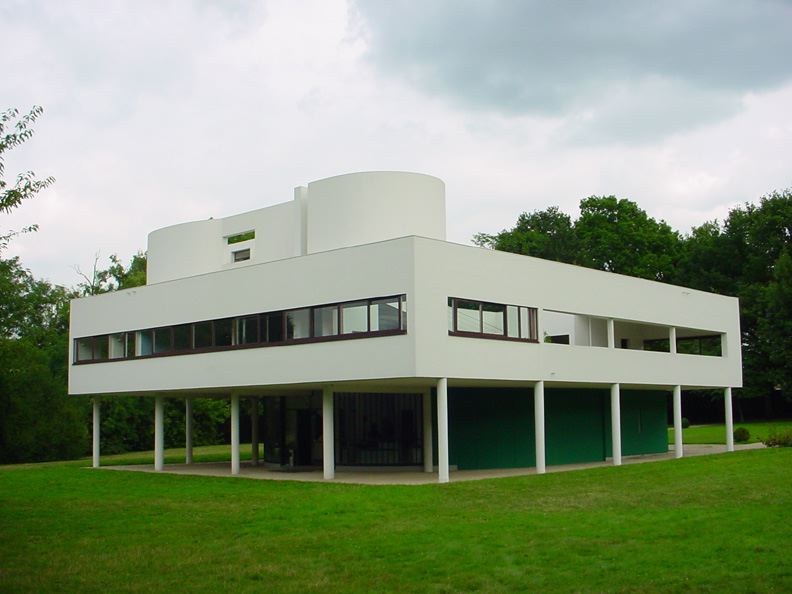Villa Savoye
Villa Savoye. Poissy‐sur‐Seine, France. Le Corbusier (architect). 1929 C.E. Steel and reinforced concrete.
- The Villa Savoye at Poissy, designed by Le Corbusier in 1929, represents the culmination of a decade during which the architect worked to articulate the essence of modern architecture.
- Throughout the 1920s, Le Corbusier considered the nature of modern life and architecture’s role in the new machine age.
- Located just outside Paris, the Villa Savoye offered an escape from the crowded city for its wealthy patrons.
- Its location on a large unrestricted site allowed Le Corbusier total creative freedom. The delicate floating box that he designed is both functional house and modernist sculpture, elegantly melding form and function.
- Le Corbusier lavished praise on the totems of modernity—race cars, airplanes, and factories—marveling at the beauty of their efficiency.
- During the 1920s, Le Corbusier designed a series of houses which allowed him to develop his ideas further. By 1926, he had devised his Five Points of Architecture, which he viewed as a universal system that could be applied to any architectural site.
- The system demanded pilotis (slender columns) to raise the building off the ground and allow air to circulate beneath; roof terraces, to bring nature into an urban setting; a free plan that allowed interior space to be distributed at will; a free façade whose smooth plane could be used for formal experimentation; and ribbon windows, which let in light.
- The Villa Savoye’s integration of indoor and outdoor spaces allowed the family to spend time outdoors in the most efficient way possible—the house was, in a sense, a machine designed to maximize leisure in the machine age.
- The Villa Savoye can be understood as Le Corbusier’s refinement of his architectural system, his own personal Parthenon.
- Its essential geometric volumes embody his concept of the type form, and its careful consideration of procession and proportion connect the building to Classical ideals.
- At the same time, its clean simplicity and its use of concrete evoke the precisely-calibrated works of engineering so admired by the architect.
- The Villa Savoye represents Le Corbusier’s re-conception of the very nature of architecture, his attempt to express a timeless classicism through the language of architectural modernism.
